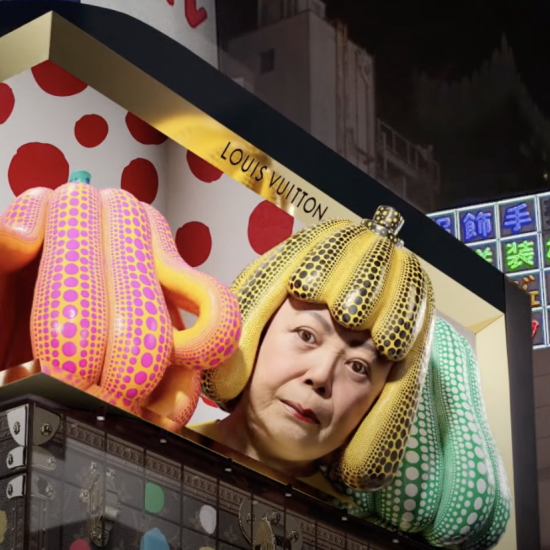
OOH advertising is changing its position in the advertising world - diversifying. Out-of-home is being profiled on OOH and DOOH /or even Digital Out of Home. Also, there has been a DOOH category in media advertising monitoring in Slovakia for some time now, which greatly helps media planners and marketers who want to have an overview of the segment.
Classic out-of-home? Still less…
As the years go by, the number of "clean" OOH advertising formats such as billboards, banners, posters is decreasing, not only because of their effectiveness or immeasurability, or the dimension of ecology, but also because of the reduction of visual smog (Bratislava). Often classic billboards are simply literally unsightly after a few weeks, despite the efforts of the billboard companies to maintain them.
Nowadays, digital screens or citylights are flooding the public space, especially in shopping malls, in public places with a high density of people.
Digital OOH advertising trends in 2023 are trending heavily towards technology and innovation. To learn what's new in the OOH and DOOH segment, keep reading:
1.Anamorphic advertising / 3D advertising
The anamorphic advertising trend literally went viral last year. Think for example of the gigantic 3D cat in Tokyo, the beautiful bubbles in Louis Vuiton's stacks, their collaboration with Nike Airforce (NYC) or the latest collaboration with Japanese artist Yoyoi Kusama - all on gigantic formats (Tokyo) that provide the possibility of perceiving a 3D dimension for the viewer.
Anamorphic advertising is a type of DOOH advertising that takes place on very specific outdoor screens, which are usually placed on buildings or curved facades to give the impression that the image has depth, thus creating a 3D effect from specific angles in the public space.
This marketing trend is particularly popular in Asia, but all indications are that it will continue to grow globally in 2023, as it also creates a truly overwhelming impression on the public.
Brands work with the knowledge that brand liking is built and triggered mainly by the emotion and visual experience with the brand.
2. Location-based advertising
Another top digital OOH trend this year is location-based affinity advertising-as the name suggests, it's based on the right location. What does that mean in detail?
An advertisement you see on the street, at a bus stop or in a shopping mall is tailored to the environment and audience by its message, creative or timing, which significantly increases its affinity, so you perceive it as more important, more relevant and therefore more likely to remember it, or you have a higher motive to act sooner based on it (action/purchase - according to the call for action).
This marketing trend is starting to be reinforced by technology and in particular the Internet of Things (IoT). For example, more and more cities are equipped with sensors that collect information on traffic, air quality or temperature.
All of this data can then be used by brands to deploy specific advertising that connects with the recipient's current needs and audience. What's especially great for marketers is that the data collected can also be used internally by the brands themselves to further develop marketing and business strategy.
3. 360-degree video or virtual tour
Nowadays, it's no surprise that video is the biggest traffic magnet on online platforms. Video has overtaken both infographics and blog articles in popularity, and 80% of marketing experts confirm this idea, stating that by using video, their direct sales have increased significantly.
We predict that this year 360º video will be one of the most preferred formats, as it allows the recipient to observe a situation/object/object in the form of a virtual tour from all angles, as if they were there.
So far, this format has been used more in online advertising, but very little in OOH advertising. However, this will change in 2023 and it will be one of the most interesting marketing trends.
4. AR: augmented reality in advertising services
In 2021, Snapchat conducted a preview of what augmented reality will look like in the "advertising world" in the near future. In its concept, it makes use of large-scale OOH formats with QR codes; passers-by, after retrieving them, had the opportunity to see spectacular scenes such as a moonscape, a jungle or a flying whale. Snapchat's goal was to promote their app and filters.
New this year is the continuation of a promotional campaign that uses the uniqueness of AR's viral trends with a demonstration of bizarre effects as a means to introduce people to a different view of the real world.
It is predicted that this trend will continue and we will encounter augmented reality more and more often in the daily advertising (and OOH) world.
Snapchat Inc.
5. Personalised advertising
This trend is one of the most dramatic trends in digital OOH: the goal is to tailor outdoor advertising to the audience.
This means that advertisers will create personalised outdoor advertising and tailor it to a variety of factors such as gender, age or browsing history. All thanks to artificial intelligence (AI).
Imagine an OOH format in the form of a CLV that you walk past on the street and express interest in, for example, by clicking on a website or searching for a profile on Instagram: the artificial intelligence gets your basic personal data and collects more information about the profile of the potential customer, which the marketer can then tailor the ad to, so that the likelihood of targeted advertising is increased.
Here the digital and real world work beautifully together. Digital advertising and traditional advertising would thus increasingly intermingle and work together.
Incidentally, DOOH Lurity already had a similar personalised ad format in place in 2016, where age and gender assessments triggered relevant advertising, but this was in the period before GDPR and the almighty corona with the veils on its face intervened more significantly in the lives of the media and the consumer.
6. Less classic OOH, more digital OOH
It is already notorious that DOOH formats are much more attractive and attract more attention than regular static OOH, as they play videos or rotate images. In addition, another difference lies in the rotation: the DOOH medium can play a "carousel" of ads, thus offering varied content and thus attracting attention with more and more ads.
This DOOH is now everywhere where there is a higher incidence of people - whether in motion or, on the contrary, at rest: in OCs, post offices, gyms, trains, spas, rest areas, elevators.
7. Integration of mobile devices into outdoor advertising
We've already mentioned smartphones as part of cooperative marketing. Scanning QR codes or monitoring smartphones as part of advertising tactics are just a few examples. Smartphones have a lot of potential in this type of advertising, as very powerful and promising strategies can be devised using them.
One of the brands that best demonstrated this theory is Burger King with its "Burn That Ad" campaign in Brazil.
This campaign consisted of installing various pixelated billboards in different locations to motivate people to discover their real message - using a smartphone. To do this, an augmented reality/AR feature was made available in the Burger King app, which you loaded the board in question and a visual effect of it burning was displayed.
When the sign burned up and disappeared, the headline appeared that you had won a free Whopper. This is undoubtedly one of the best and most creative examples of the combo of DOOH, augmented reality and smartphone usage.
8. Innovations in moving OOH
Another trend in OOH is so-called mobile billboards, both those with digital and traditional components. This kind of advertising is nothing new, but it seems to be experiencing a renaissance.
Mobile billboard-style advertising has proven to be very effective, so much so that it has a 97% return on investment (ROI) rate, according to the Outdoor Advertising Association of America. Typically placed on buses and taxis.
The most positive and interesting part of this type of marketing is that the message can reach many more people because it is not static.
Within this type of advertising we can find various alternatives, such as wrap-around advertising, which completely covers the surface of the vehicle.
There are many options for a mobile billboard and it really depends on the creativity of the brand and on which means of transport you choose to communicate.
9. DOOH - not only more efficient but also more affordable
We know that the costs associated with the production and logistics of classic OOH such as megaboards, walls and billboards are high - expensive production has often made the medium completely unaffordable for SMBs and small businesses.
The good news DOOH is cost efficiency: booking and withdrawal are instantaneous. The preparation of the visual is in digital format, with the possibility of animation or video - again, no production costs (except for the creative) and the best news is that the medium itself is highly efficient and its CPT is often lower than that of a banner ad (!). We consider this to be the best benefit of DOOH.
Additionally, you don't have to have campaigns deployed for a calendar month, or even 2 weeks if the tactic doesn't stick. You can also choose the locations within the country yourself - in the self-service, simple software.
Back to blog